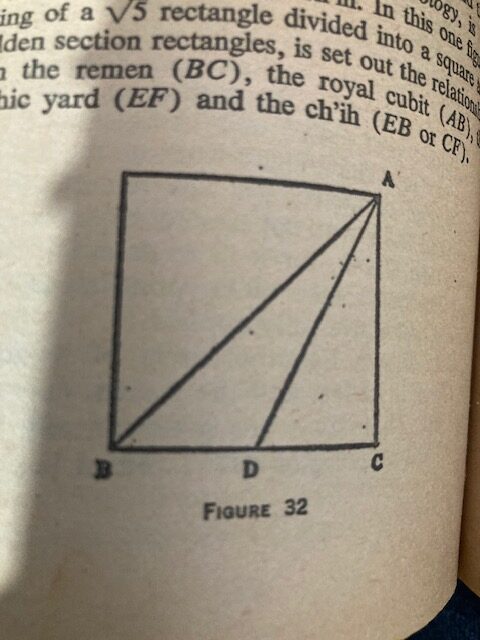Isosceles Foot Triangle can be used to approximate many ancient measurements. A previous post shows how a foot can be found looking at specimens of cubic inches of gold at various museums around the world. A cube, of course, has 12 edges. Each edge placed in a straight line and tangent to one another equals one foot. Here is a diagram of my isosceles foot triangle:


The actual printed diagram that shows the “established” geometry behind the origin of the twelve inch foot can be found in John Michell’s book, City of Revelation, on page 114. copied above. If any side of the square, AC or BC for example, is one Egyptian remen of 1.2165 feet, then the half diagonal AD becomes 1.36 feet. That in turn equals exactly one-half of a megalithic yard.
1.36 becomes an extremely auspicious number to measure by. Total all the numbers from one to sixteen and you get 1.36. The numbers 1 to 16 arranged as follows defines the magic square of Jupiter which defines success in in action in the ancient and astrological realm. Of course, measurement was extended in the Canon as John Michell explains in the City of Revelation. However my own featured diagram was used by an older civilization!

The way I discovered , as drawn above, geoemtrically presents this hypothesis. Let’s analyze by line segments:
AB + BD = 1.707 feet. Compare to an actual shorter cubit based on the canon of measures is 1.718 feet.
AB + AC + BD = 2.707 feet. An actual megalithic yard again based on the canon of measures is 2.72 feet.
AD + BD= 1.207 feet. An actual Egyptian remen which is the basis of the Canon of Mesaures is 1.2165 feet. However…
A total surprise comes with the final measurement that I will present here. Add lines AB + BC +AC and the total is 3.41 feet. This becomes the actual size of the most ancient of all measures, the “hunab” used in South America most extensively. . It predated Egypt. As a consequence, I can conjecture that before the Egyptian Canon of Measure my isosceles foot triangle, was the basis of an even older culture than that of Egypt that is long lost!
Leave a Reply